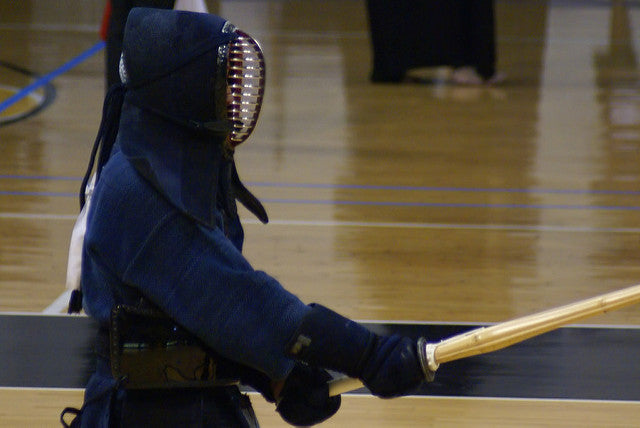Votre panier est vide


It's a common assumption that kendo and kenjutsu refer to the same style of traditional Japanese martial arts. While they share some similarities, however, they are each unique with their own characteristics.
Kendo and kenjutsu are two popular forms of traditional Japanese martial arts. From an outsider's perspective, they may appear to be the same. Upon closer inspection, though, you'll see this isn't the case. So, how do they differ?
Kenjutsu
Kenjutsu isn't a specific type or style of martial arts. Rather, it's an umbrella term used to describe all forms of Japanese sword-based martial arts. Kenjutsu originated out of feudal Japan, during which samurai warriors emphasized swordsmanship in their daily lives. In fact, the word "kenjutsu" literally translates to "the art of the sword."
There are dozens of different types of kenjutsu schools, some of which focus on a specific skill , such as drawing ( iai), attacking ( battoiu) or disarming an opponent ( shinken shirahadome). However, the most popular kenjutsu style practiced today is suburi, which involves making practice swings and strikes.
Regardless of which skill the kenjutsu school teaches, they generally use bamboo practice swords instead of real, metal swords. This isn't a new trend, either. Even in the days of feudal Japan, samurai warriors trained with bamboo practice swords to reduce the risk of injury and protect their real swords from damage.
Kendo
On the other hand, kendo is a specific style of Japanese martial arts that involves swordsmanship using specific types of equipment. It was created around 18th century as a more formal way of sword training. According to the All Japan Kendo Federation (AJKF), the concept of kendo is to " discipline the human character through the application of the principles of the katana."
In Kendo, two practitioners are attempt to strike each other using practice swords. There are specific areas on the body, however, that practitioners must strike -- and only striking these areas will yield points. The practitioner with the most points at the end of the match is declared the winner. Regardless of who wins, however, both practitioners end the match by bowing in respect.
Kendo requires practitioners to wear and use various equipment, including practice swords, masks, body armor, belts and gloves. It's also a rather noisy practice, as practitioners are encouraged to express their fighting spirit and intimidate their opponents by shouting.
Of the two, kenjutsu is said to be more restrictive than its kendo counterpart. While both types have their own rules, kendo is more lenient in what it allows.
Photo credit: Vincent Diamante